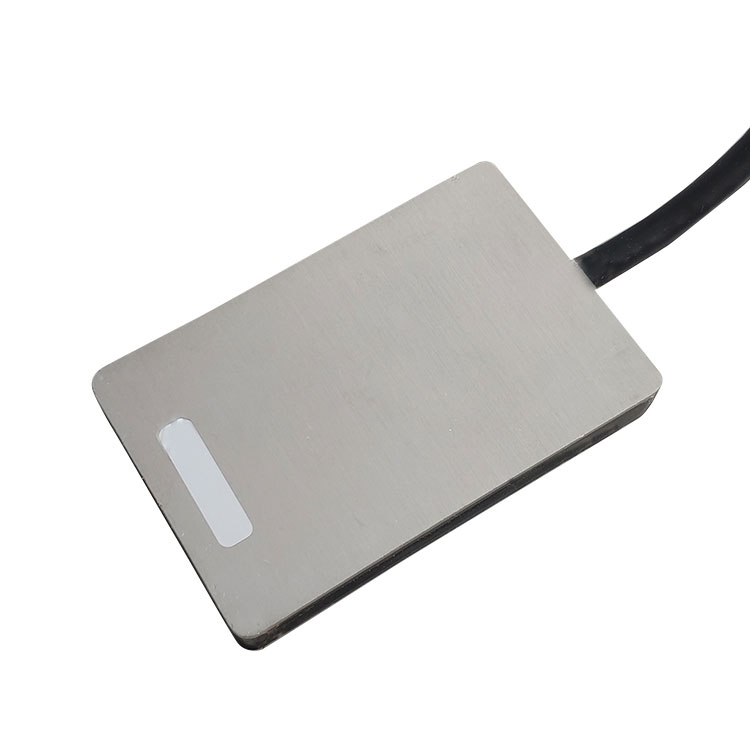Tianqiong Sensor IOT Technology Co., Ltd
Sales Manager:Ms. Emily Wang
Cel,Whatsapp,Wechat:+86 15898932201
Email:info@fengtutec.com
Add:No. 155 Optoelectronic Industry Accelerator, Gaoxin District, Weifang, Shandong, China

Sales Manager:Ms. Emily Wang
Cel,Whatsapp,Wechat:+86 15898932201
Email:info@fengtutec.com
Add:No. 155 Optoelectronic Industry Accelerator, Gaoxin District, Weifang, Shandong, China

Model:FT-TL1
Brand:tianqiong
1.Soil heat flux sensor product overview
Soil heat flux sensor is the leading sensor for soil thermal conductivity, used for heat flux measurements in soil as well as through walls and building envelopes.Soil heat flux sensor, also known as heat flux plate, soil heat flux plate, heat flux meter, etc., is an instrument used to measure heat flux and can be used for internal soil measurement.It is output in the form of a thermopile, which is proportional to the heat flux, and is easy to operate and is especially suitable for measuring the thermal conductivity of soil, building walls and glass walls.The soil heat flux value measured using a heat flux plate buried 2 cm in the soil.During the year, it changes with the seasons.In summer, the soil heat flux is positive, and the existing heat enters the soil layer, and the amount is large; in winter, the soil heat flux is negative, and the heat in the soil is released into the atmosphere, but the amount is small.
2.Scope of application of Soil heat flux sensor
This product can be widely used in the environment, agriculture, forestry, planting, construction, etc.
3.Soil heat flux sensor technical parameters
Supply voltage: □12-24V □5V
Output signal: □ Current type 4~20mA □ 0-2V □ RS485 customized
Measurement range: -200 to 200w/m2
Internal resistance is less than 300Ω
Measurement accuracy: less than 5%
Hot flow calculation formula
Heat flow (w/m2) = coefficient (w*m-2/mv) * output (mv)
Working current: 12V power on about 26mA
4.Functional features of Soil heat flux sensor
1.Small size, fast and accurate measurement
2.Low-power design, adopt reasonable power consumption control mode
3.Stable performance
5.Soil heat flux sensor measurement method
1.Methods for measuring in soil
The plate surface should be placed horizontally in the soil layer perpendicular to the direction of heat flow.The buried depth of the sensor is usually 3-10 cm deep from the natural lower surface.It should be avoided directly on the soil surface as much as possible, because the natural lower surface is not a geometric plane, and the slight fluctuations on the surface will make the sensor readings lose their representation.At the same time, the direct contact of the upper surface of the sensor with air may also cause radiation errors.Usually, a representative area is selected in the observation site and dig a section vertically down with a shovel.
Measure the required depth downward from the soil surface along the section, and then hollow it in the horizontal direction.The size of the heat flow plate can be placed just in place, so that the upper and lower sides of the sensor can maintain good contact with the soil, lead the wires along the section and then backfilling the soil.However, it should be noted that the buried depth of the heat flow plate should be the distance between the center line and the soil surface.
2.Methods of measuring on the wall
First, apply the surface of the heat flow sensor evenly with Vaseline, and attach the heat flow sensor coated with Vaseline to the surface of the wall, so that the wall and the heat flow sensor can make close contact.After staying for a few minutes, the measurement can be started after the heat flow sensor is adapted to the ambient temperature.
In the fields of meteorological monitoring and hydrology, the piezoelectric rain gauge and the Radar Precipitation Sensor Rain Gauge Distrometer are commonly used rainfall monitoring devices. Today, the author will compare the differences between the two.The piezoelectric rain gauge works by u...
Due to the special nature of their production processes, chemical plants have strict requirements for meteorological condition monitoring. This need stems from two core backgrounds: first, from a safety perspective, many chemical materials are extremely sensitive to wind speed, wind direction, and o...
The Anemometer for Drones is a specialized device designed for low-altitude meteorological monitoring, with its core technology operating on the principle of ultrasonic resonance. This principle works as follows: the ultrasonic generator inside the device emits sound waves of a specific frequency. W...
The Photovoltaic Weather Station under Tianqiong enables precise, real-time, and continuous monitoring. Specifically designed for the photovoltaic industry, it accurately detects key meteorological parameters that affect photovoltaic power generation. In particular, regarding solar radiation, it can...